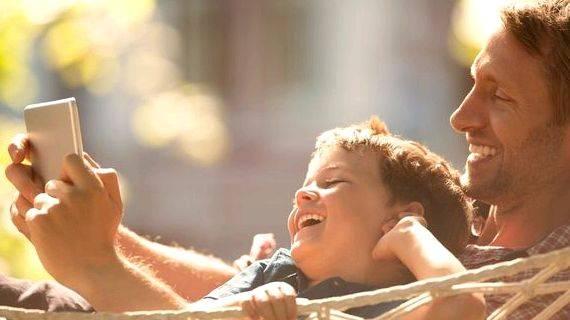

Published: 13:46 GMT, 12 March 2014 | Updated: 16:03 GMT, 13 March 2014
Our meeting room at Brighton’s Hotel du Vin, a stone’s throw from the famous seafront, looks more suited to corporate suits than as a springboard for budding children’s authors.
I expect to hear those meaningless phrases that executives use to make themselves sound important: think outside the box, blue-sky thinking etc.
But within an hour the room resembles a children’s playgroup. A laundry bag full of Beanie Babies is deposited onto the table: kangaroos, penguins, rabbits, giraffes, zebras, eagles and dragons.
Enthusiastic student: Max (centre) gets ready to learn the art of writing a children’s’ book with author Alan Durant (left) and illustrator Guy Parker-Rees (right)
‘Choose an animal and create a character,’ says our tutor, the successful children’s author Alan Durant. He has 90 picture books and teenage novels to his name, so he must be doing something right.
Durant asks us to come up with an idea for our own children’s book, starting with a character name, right through to the story’s ending.
On this two-day course we hope to learn everything about picture books: illustration, design, production and the creative process from inspiration to publication, and of course, how to write one ourselves.
‘Because you’re writing for small children there’s this impression it is easy, but it’s really hard,” Durant says.
He’s not joking. The sound of seagulls outside is soon joined by the noise of heads being scratched and our imaginations working overtime.

All art is autobiographical, even children’s picture books. Durant advises us to tap into our early memories.

Sensational setting: The course was hosted at the Hotel du Vin in Brighton
‘Remember who you were as a child and what was important to you then. You want your story to be individual and unique but give it some universal appeal, so readers can identify with it.’
Most of Durant’s own books are based on events in his own childhood, or that of his children. Dear Tooth Fairy was inspired by his daughter losing a tooth. Instead of leaving it for the tooth fairy, she kept it in a pot at the end of her bed.
‘In the book, the character Holly wishes to hold onto her tooth but also wants the money for it, so she tries to trick the Tooth Fairy by leaving some plastic vampire fangs under her pillow. My daughter’s experience was the starting point for it.’
RELATED ARTICLES
Share this article
Able teacher: Alan Durant is a successful children’s author
Whereas, the inspiration for Always and Forever, Durant’s touching book that deals with death and bereavement, was the sad suicide of a friend’s brother-in-law in his early 30s.
In the book, four animal friends live in a house in the woods. When one of them dies unexpectedly, they start the grieving process and how best to remember him.
‘I wrote it because my friend wanted a book to read to his two young daughters about death that could help them with their grief,’ Durant recalls.
‘There were books about losing elderly relatives but nothing about people dying before their time. It’s hard to find a more serious subject than death but you can deal with the big stuff in a picture book.

It’s how you make it accessible.’
From inspiration and the creative process, he also offers publishing tips.
‘There are so many factors involved in getting published. It can be who you know in the business, luck or timing. There’s so many whims involved. I’m sure there are brilliant children’s stories out there that have never been published.’
Durant advises his budding children’s authors to monitor what kind of stories are selling and what books young people are reading. Then he gives us a surprising revelation – the author and illustrator never meet while the book is in production.
‘Publishers like to keep authors and illustrators apart. We never talk to each other. Perhaps this way, they remain in control!
‘If you want to be a children’s author you have to cut constantly. Often you may have to lose your favourite bits. Is that line actually doing anything to move the story on? Every word needs to be doing something. Most picture books are only around 600 words so you don’t have many words to tell a story.’
A star is born: Alan has written nearly eighty books now and most of them started as stories he made up to entertain his three children
We are quick learners. The seagulls outside are now drowned out by the scrubbing sound of pencils busily crossing out sentences.
Durant started out writing teenage novels and didn’t write picture books until he had children.
‘I think it’s very hard to write picture books if you haven’t got children. Some authors can pull it off, and write from their memories of being five or six.’
As our stories take shape, Durant steers us towards the all-important ending. He advises us to avoid ambiguous, scary or unhappy endings.
‘It’s vitally important to bear in mind how you want it to finish. If it suddenly falls flat, it ruins the whole book. What’s that last line going to be? Is there a twist’
‘Whatever subject you’ve dealt with it’s important not to leave children in the dark.” He’s talking upbeat endings, not leaving the bedroom light on.
‘It’s different as children get older. When you get to teenage books you can be as dark as you like.”
‘When real life kicks in? I ask.
Laughter, too, is an important ingredient in any children’s story.
Regency flavour: The course is held at Hotel du Vin, includes a lunch and preferential room rates are also available
‘Think about what youngsters find funny,’ adds Durant. ‘Don’t be too sophisticated. Children’s humour is incredibly basic. It’s slapstick. There are many books about pants and bottoms.’
He shows us a few examples: Father Christmas Needs A Wee, The Queen’s Knickers, The Royal Nappy, The Giant’s Loo Roll. Clearly children’s picture books is one area where the bottom hasn’t fallen out of the market.
‘Always think of jokes adults may like, too,’ adds artist Guy Parker-Rees, who joins us later. He has illustrated many children’s books, with Durant and other authors.
‘With a picture book you have to appeal to the parents, too,’ he says. ‘At bedtime, they’re tired. They want to be entertained, too.
‘I’m very impressed with all these ideas you’ve come up with,’ says Parker-Rees. He clearly can’t see the pools of blood, sweat and tears on the floor.
‘There a magic that happens when you put words and images together,’ he tells us. ‘But as you write, always think about what’s going to happen on the next page. Maybe create a surprise as you turn the page, like a big splash as characters fall into water.
‘I much prefer drawing animals. They have a much wider appeal. Also, they’re better shapes and just more interesting. They’re funnier somehow, too.’
Strangely, all our stories feature animal characters struggling with self-identity issues: a dinosaur who can’t roar; a badger who wants to be a horse, a lonely eagle seeking a mate but scares everyone off; and my story, a short-sighted zebra who feels unloved.
Speak to the reader: Alan Durant’s books cover a wide variety of topics, from comedy situations to helping children deal with death and bereavement
It’s time to read out the first-drafts of our stories. Well, the first few paragraphs at any rate:
‘Zack the zebra hated wearing glasses. They made him feel ugly. Often he could hear the other animals laugh at him around the watering hole. Even his family sniggered. Sometimes, when it was really hot, they slipped off his head into a pile of elephant dung. Then they laughed at him even more.’
The feedback is far more encouraging than I expected.
‘I like the idea of a zebra wearing glasses,’ says Alan Durant. ‘Keep the idea simple. Don’t make it complicated.’
‘I love the glasses falling off into the elephant poo,’ adds Guy Parker-Rees. ‘There’s a strong potential for some good illustrations here. Perhaps explore the practical problems of wearing glasses, like when they steam up in the hot savannah.’
But I am struggling with my lacklustre finale until Parker-Rees suggests a brilliant one I hadn’t considered.
‘Maybe you could have a nice visual ending without any words. On the final page Zack returns to the watering hole to find every zebra wearing glasses?’
It’s clear all our stories have moved on, in just a short space of time. At the end of the course, my chest is puffed out, my confidence high.
Afterwards, I am scratching my head again. But this time in wonder, not in search of inspiration. I had always toyed with the idea of writing a children’s book, but until now never believed I could. How about that for an upbeat ending?
TRAVEL FACTS
The ‘Write A Children’s Book in Two Days’ course is available from The Writers’ Academy and costs £295 each including tuition, refreshments and one lunch. Visit thewritersacademy.co.uk.
Discounted room rates for participants at Brighton’s Hotel du Vin start at £160 per night including breakfast. Visit hotelduvin.com/brighton.
The next ‘Write A Children’s Book in Two Days’ course will be held at Hotel du Vin Tunbridge Wells on 21st and 22nd March.
Previous answers to this question
This is a preview of an assignment submitted on our website by a student. If you need help with this question or any assignment help, click on the order button below and get started. We guarantee authentic, quality, 100% plagiarism free work or your money back.
 Get The Answer
Get The Answer